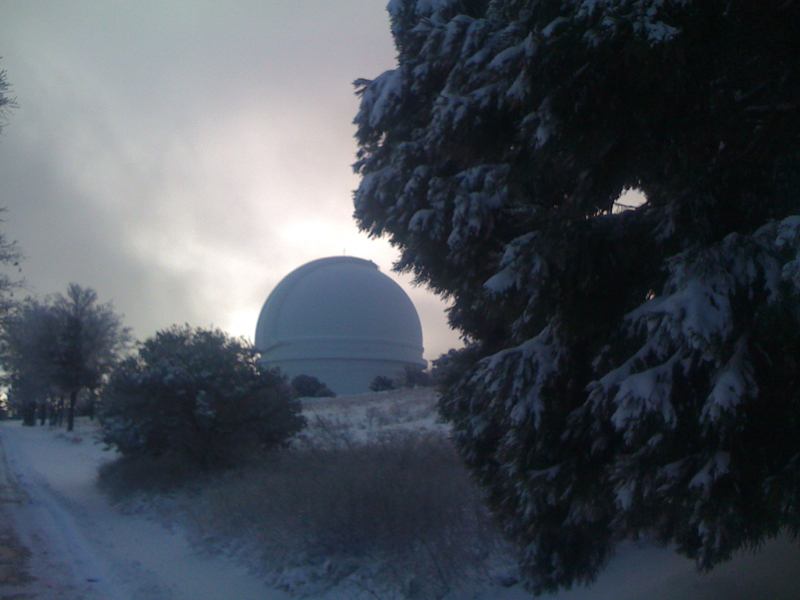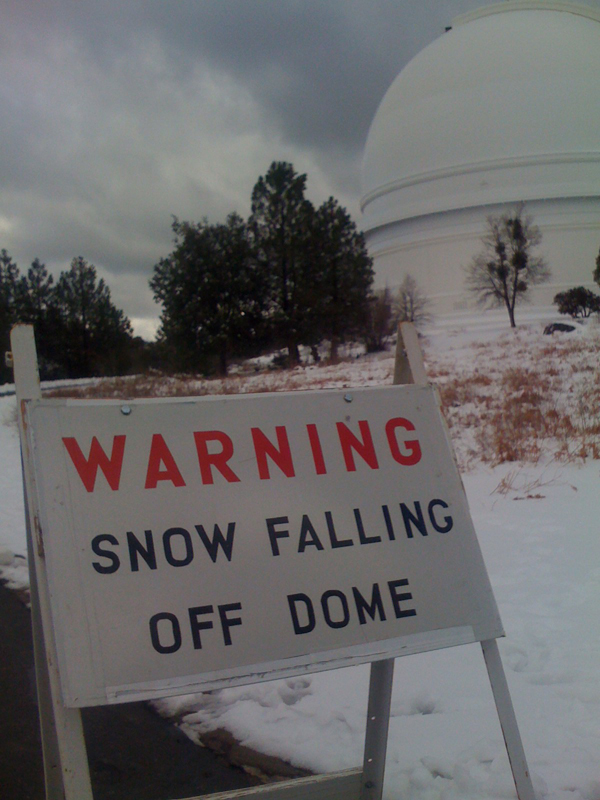The first object studied using the Hale was Hubble's Variable Nebula (NGC 2261). The exposure was made by Edwin Hubble from the prime focus observing cage on the night of January 26, 1949. The glass photographic plate was labeled: PH-1-H (Palomar, Hale, # 1, Hubble).

Edwin Hubble began his studies of the nebula that now bears his name at the Yerkes Observatory in 1916. Later it became the first object that he photographed through the 100-inch Hooker Telescope at Mt. Wilson Observatory.
The nebula is a fan-shaped cloud of gas and dust known as a reflection nebula. It is illuminated by a young star known as R Monocerotis (R Mon). The star is located in the bright region at the lower part of the nebula which is 2,500 light years from Earth. Hubble noticed that the nebula seemed to undergo rapid variations in its appearance.
Also photographed that night were giant elliptical galaxy M87 (NGC 4486), spiral galaxies NGC 5204 & NGC 3359 and globular star cluster M3 (NGC 5273). Here's a modern modern image of M3 taken with the Hale.

















